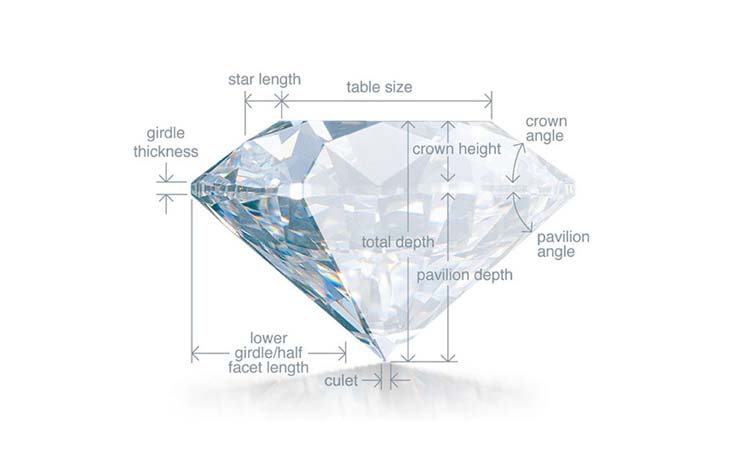Proportion, angle and cut placement make each diamond unique. This quick overview gives you the basics of your diamond's anatomy.
While each diamond is unique, once cut and polished, all diamonds possess a shared set of common characteristics, generally referred to as the diamond anatomy. The individual proportions, angles and placement of these characteristics will vary for diamonds of different shapes and sizes, however, their basic definitions are the same.

Facet: The smooth, flat surface cuts of a diamond are called facets. Most diamonds have 58 facets (57 if the culet is excluded). Certain specialty cut diamonds have more facets, generally leading to more sparkle.
Table: The top horizontal facet of a diamond, it is also the largest facet.Crown: The upper portion of the diamond, measured from the top edge of the girdle up to the table.
Girdle/Girdle Thickness: The middle portion of a diamond or the intersection of the crown and pavilion. The girdle thickness defines the perimeter of the diamond and functions as the setting edge.
Pavilion: The bottom portion of a diamond that extends from the girdle down to the culet.
Culet: The small facet at the tip of a gemstone. Not all diamonds have a culet cut.
Depth: The height of a gemstone as measured from the bottom of the culet to the top of the table.
The article comes from China Chang'an stainless steel jewelry (metal jewelry) manufacturer - A2A, the website is www.stainlesssteelacc.com .
Copyright © A2A All Rights Reserved | Sitemap